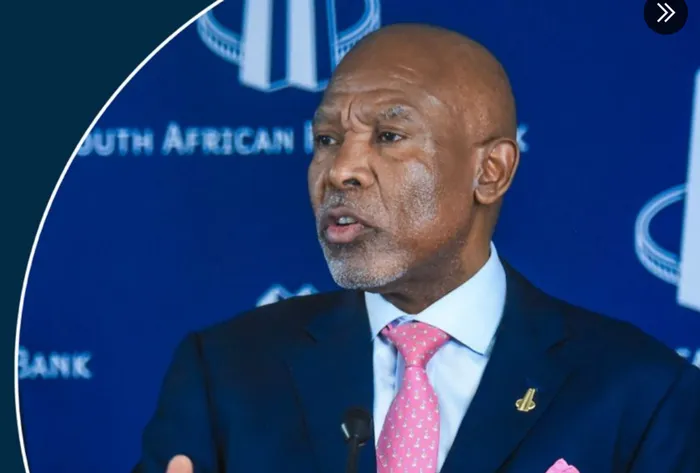
SARB Governor, Lesetja Kganyago may not easily get his 3% inflation target because of costs such as petrol and electricity, which are set by the government.
Image: SA Reserve Bank.
Governor Lesetja Kganyago of the South African Reserve Bank (SARB) encounters significant challenges in achieving his ambitious target of a 3% inflation rate, largely due to government-controlled costs like petrol and electricity."
Kganyago recently said that the bank’s Monetary Policy Committee would now use 3%, the bottom of the 3% to 6% target range, as the anchor for its forecasts. Finance Minister Enoch Godongwana has publicly pushed back against SARB, warning that the central bank cannot independently decide to lower the country’s inflation target.
The governor has argued that lowering the target from the current 3% to 6% band would result in sustainable economic growth and cheaper borrowing costs.
Yet, Anchor Capital economist, Casey Sprake, said there are issues with Kganyago’s target because “a significant share of inflation comes from administered prices” that consistently rise above the headline consumer price index."
Administered prices are those that are not influenced by typical economic factors such as supply and demand, as well as prices passed on by producers.
“Unless these are restrained, the private sector would bear the full adjustment burden. Specifically, private sector inflation would need to fall to around 2.6% (roughly half its long-term average) to compensate for persistently higher public sector inflation,” says Sprake. Inflation recently ticked up and is now firmly within the old band at 3.5% year-on-year.
Sprake said that, while the SARB’s modelling shows a lower target could allow repo rates to fall by 50 basis points in 2025 and 150 points over the medium term, “the bank’s analysis shows what is possible, not necessarily what is probable”.
The assumed smooth re-anchoring of inflation expectations may be overly tricky to achieve, Sprake said. “Without structural reforms and government buy-in, promising a lower target could backfire,” Sprake warns, adding that private sector borrowers could face disproportionate adjustment costs if administered prices remain sticky.
Coordination with government is another stumbling block. Sprake stressed that National Treasury has shown hesitation, noting that a premature shift could undermine fiscal planning.
Sprake cautions that timing is crucial as inflation is temporarily low, which is a rare opportunity to anchor expectations at 3%. “Anchoring expectations at 3% while inflation is still subdued would be far easier than attempting it once inflationary pressures return,” she said.
Old Mutual chief economist Johann Els has also indicated that the central bank does not have a large window in which to act.
“Monetary policy alone cannot deliver 3% inflation. It requires a ‘Team SA; compact: government restraint on administered prices and wages, credible fiscal consolidation, and structural reforms to boost efficiency. Without this, the risk is that the SARB pursues a target that the rest of the government undermines, leaving the economy with higher rates, weaker growth, and no credibility gains,” said Sprake.
FAST COMPANY
Related Topics:
